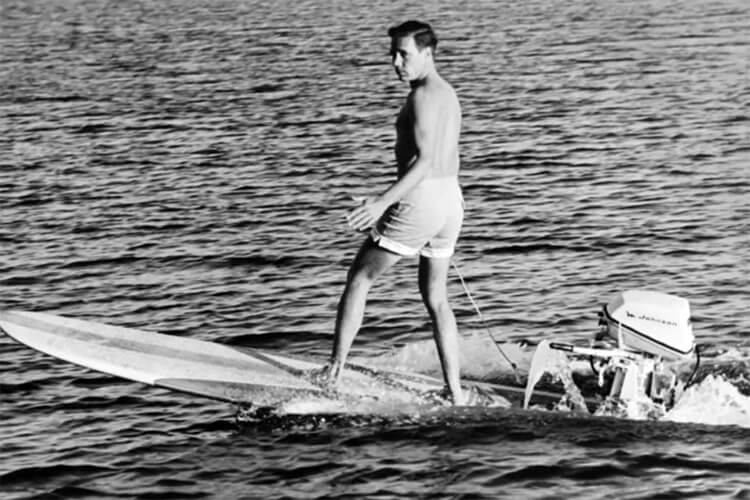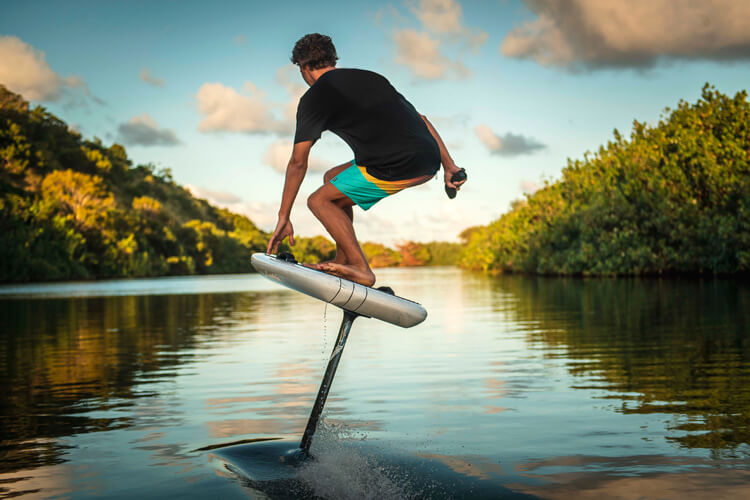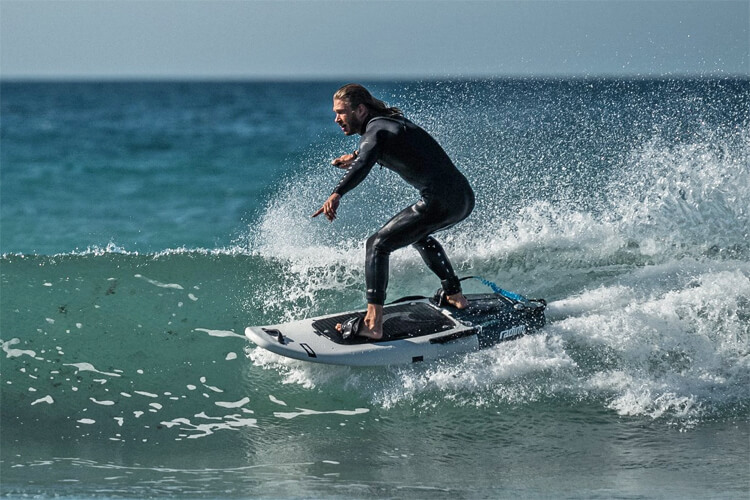Electric surfboards are opening new ways of exploring the ocean and the waves. Here's everything you should know about the motorized surfboard.
We have all seen surfers riding waves on all types of surfboards.
There are templates, shapes, and sizes for nearly all small and big waves, clean and bumpy ocean conditions.
But what is an electric surfboard, and how does it work?
Electric surfboards are specially designed boards powered by lithium-ion batteries that allow riders to glide across any body of water at high speeds.
They are equipped with an electric jet-propulsion system activated by a wireless handheld remote control and don't rely solely on the energy of the waves to gain speed.
e-Surfboards are not meant to replace conventional surfboards.
Actually, they aim for a broader market, including the boating and high-speed water sports industry.
Battery-powered surfboards require a hydrodynamic design capable of embedding boosting mechanisms and technology that propel the device forward in a couple of seconds.

Electric Surfboard: From Prototype to Commercial Models
The first-ever electric surfboard was built in Australia in 1935.
"Surf Scooter" was a motorized surfboard built to help lifeguards rescue struggling or drowning swimmers on Sydney's Bondi Beach.
The project was abandoned after the first tests, and the innovative idea hibernated for 25 years.
In 1960, American watersports entrepreneur and pioneer Hobart "Hobie" Alter developed a surfboard with an outboard motor.
In the first decade of the 2000s, there was an attempt to market a jet-assisted surfboard designed to paddle faster and catch waves easier.
But the niche product would have to wait another ten years to really capture the interest of water sports enthusiasts.
Nowadays, these portable electric water boards are intuitive, versatile, and extremely fun, making them a complement to traditional wave riding.
How hard is it to ride an electric surfboard? The e-board is an easy-to-use water sports device.
Actually, they're way easier than learning to surf on a standard surfboard, as horsepower and the overall length, width, and thickness of the board provide all the stability you need to start moving.
To put things into perspective, the electric surfboard is probably as easy as riding a jet ski.
You can try it in open ocean waves, mushy rollers, and even bigger waves breaking out the back.
When the ocean is flat, or you find yourself inland near a good-looking body of water, you can always jump on it and carve around.
The rider's weight is no longer an issue.
A modern electric jet surfboard can bring riders up to 200 pounds (90 kilograms) to full planing in no time.
Let's take a look at the pros and cons of motorized surfboards.

Types of e-Surfboards
Today, there are currently two types of jet boards - electric surfboards and electric hydrofoils.
An e-surfboard resembles a funboard or longboard and ranges in length from 7' to 9'.
It is a watercraft that allows the rider to cruise around on the sea, rivers, lakes, and dams but also catch waves from a standing position.
There are rigid and inflatable models, but the most common e-surfboards are made from light carbon fiber and aircraft-grade aluminum parts.
Electric hydrofoil boards are surfboards equipped with a foiling structure.
It is a faster board that allows the rider to perform quick, sharp turns and glide a few inches above the surface of the water.
Motor-powered foil boards are also more dangerous and should never be ridden in crowded lineups or near popular swimming beaches.

Power and Speed
A battery-powered surfboard can go extremely fast.
The speediest high-end electric boards use a dual jet propulsion system and two batteries that enable users to plane effortlessly across the water.
How fast does an electric surfboard go?
Motor power ranges from 5-to-15 kW, providing maximum stability and control at full throttle.
A motorized surfboard can reach speeds of up to 40 miles per hour (65 kilometers per hour) and around 45 minutes of riding time, depending on the average speed.
Nearly all available models offer replaceable components and spare parts, including batteries, handles, stator/nozzle, impellers, triggers, fin setups, leashes, footstraps, and other tool kits.
What is the runtime on an e-surfboard?
It depends on the board model, size, weight, and the batteries used to power the built-in motorized system.
At top speed, you may find electric surfboards that need to recharge batteries after 20 minutes and other models that will allow you to ride for six hours.
Almost all battery-operated engine watercraft feature different power settings and removable batteries for maximum optimization of your sessions.
The charging time also varies, but the best electric-powered surfboards can be fully charged in 60 to 120 minutes.

Price
A battery-powered water board can be an expensive toy. But how much does an electric surfboard really cost?
The price of the most reliable jet-propulsion surfboards goes from around $5,000 to up to $10,000.
Why are electric surfboards so expensive?
The characteristics that will make the difference and increase the value-added cost of an e-surfboard are design and hydrodynamics, battery life, motor power, and speed.
Premium e-boards feature exchangeable and multiple long-range battery options, power levels, advanced modular buoyancy design, Bluetooth remote control, silent motor engines, and excellent planing.
Ergonomic design, footstraps, security leashes, a comfortable rubber traction pad, an emergency paddle, and even built-in storage space will make this gadget even more expensive.
The most advanced electric surfboards come with GPS systems that track the board's route, calculate the remaining battery level based on the rider's position, and inform the user when to return to terra firma.
A high-performance jet-propulsion surfboard will even allow you to jump out of the water.
Although it may not sound like a good idea, an inflatable electric surfboard can be reliable and extremely practical.
There are more affordable jet propulsion surfboards and bodyboards out on the market, but always check the device's overall settings before buying a $1,000 water sports gadget.
You can find motor-powered surfboards for sale online or in specialized motorsports shops.
The top electric surfboard manufacturers are Awake, Fliteboard, Lampuga, Lift Foils, Onean, Radinn, and Waterwolf.
Last but not least, if you're giving jet boarding a go, always wear a helmet.
You don't want to crash against an object or be catapulted onto the water at 20 miles per hour (32.5 kilometers per hour) or more.
